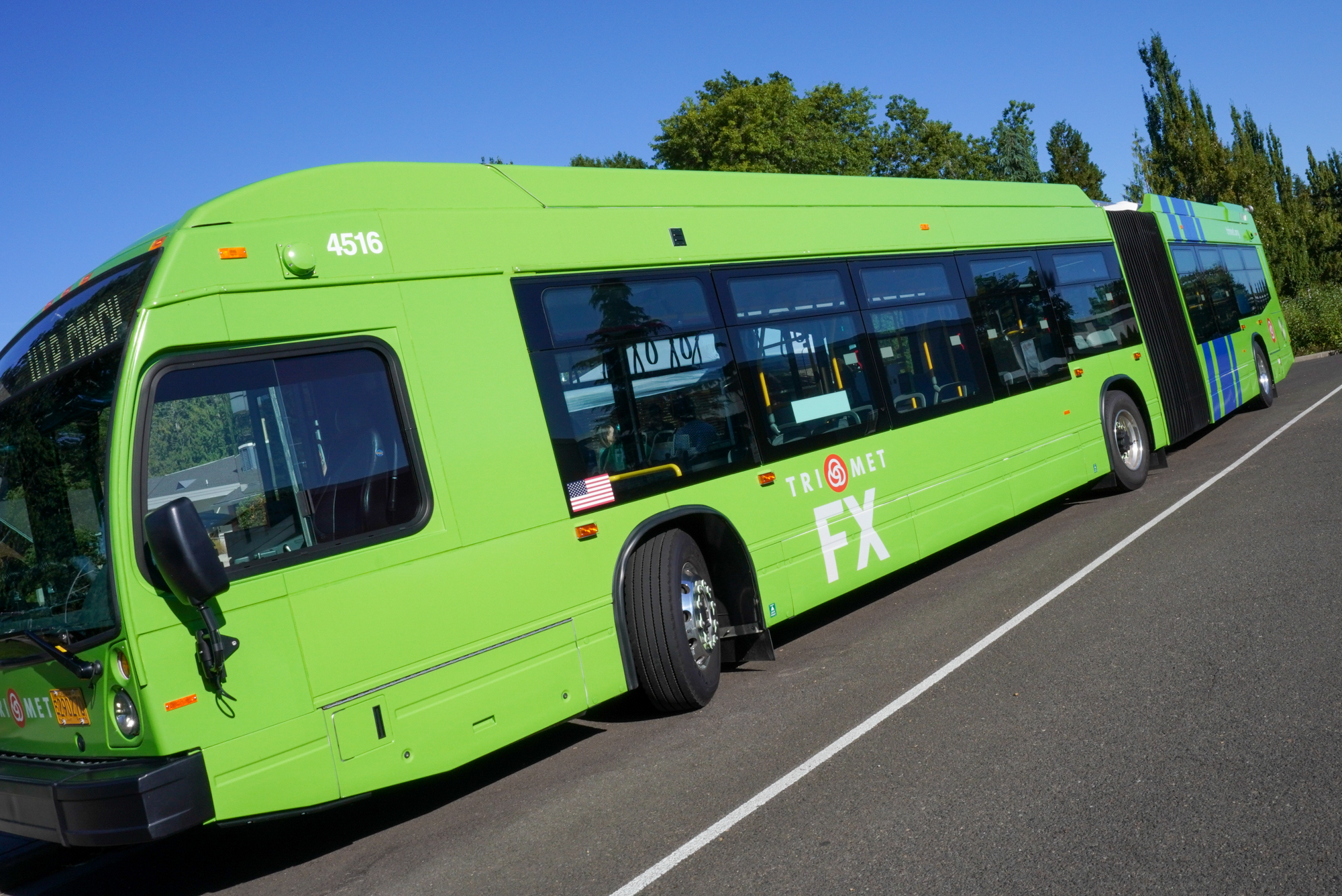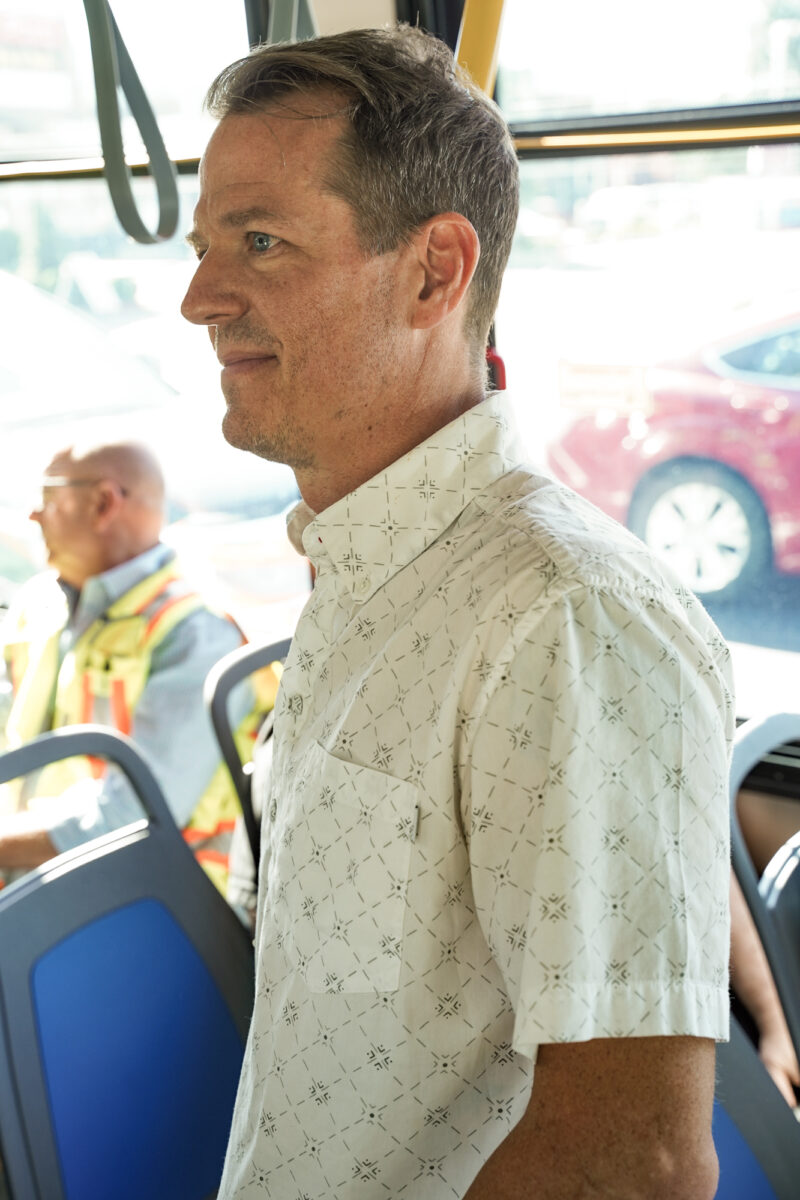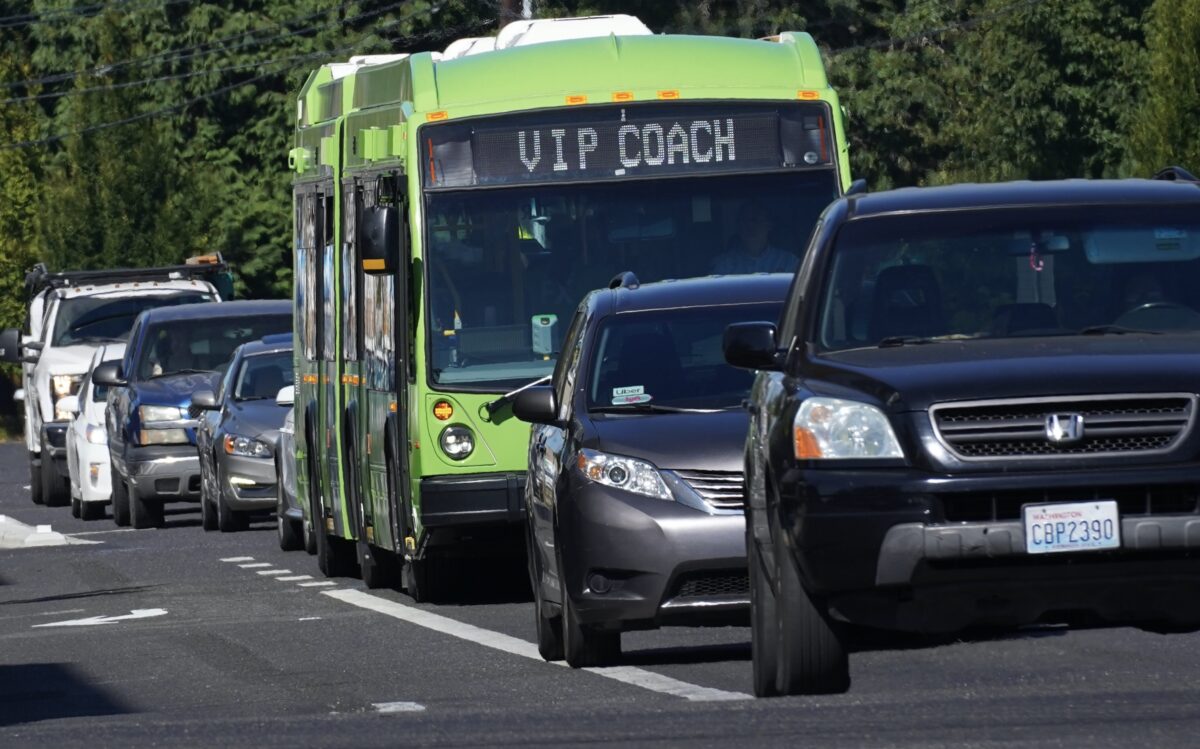TriMet has spent six years and about $175 million to establish a new kind of bus service on Southeast Division between downtown and Gresham. Now it’s finally time to see what this thing can do.
The Division corridor has been the poster child for our region’s struggles with climate killing car dependency, traffic deaths and poor transit service. When it opens on September 18th, TriMet hopes its new Frequent Express (FX) line starts a different narrative; one where Division is more humane and welcoming, and where buses finally move out of the shadows of light rail and take a starring role in non-car travel.
This morning TriMet hosted a sneak peek of the FX Line 2. I hopped on board one of the 31, 60-foot articulated buses that will soon serve 84 new bus platforms on the 12-mile corridor.
As we motored eastbound on Division from Portland Community College at SE 82nd, TriMet Division Transit Project Director Michael Kiser held court with several reporters. He detailed how the agency was able to speed up bus service, serve more people and improve safety in one fell swoop (and with a big assist from the City of Portland).
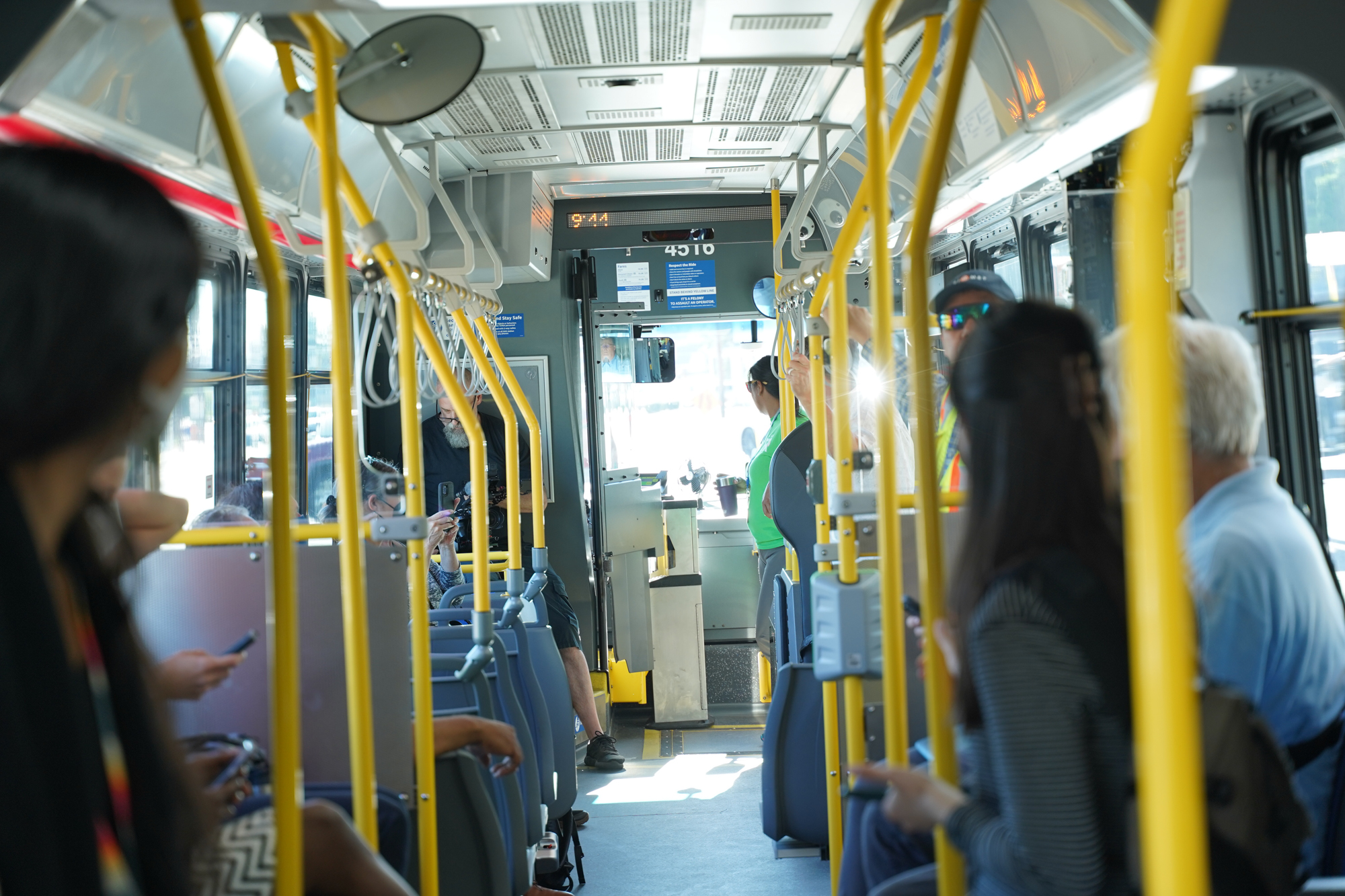
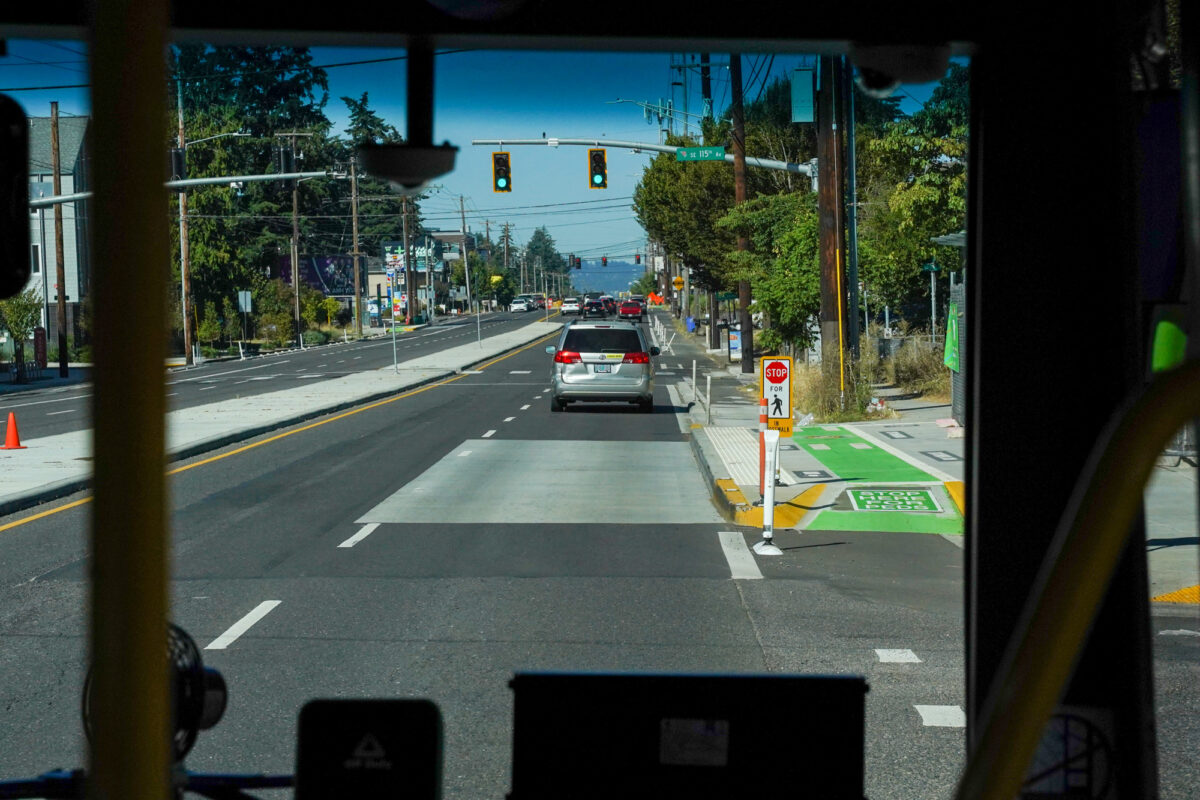

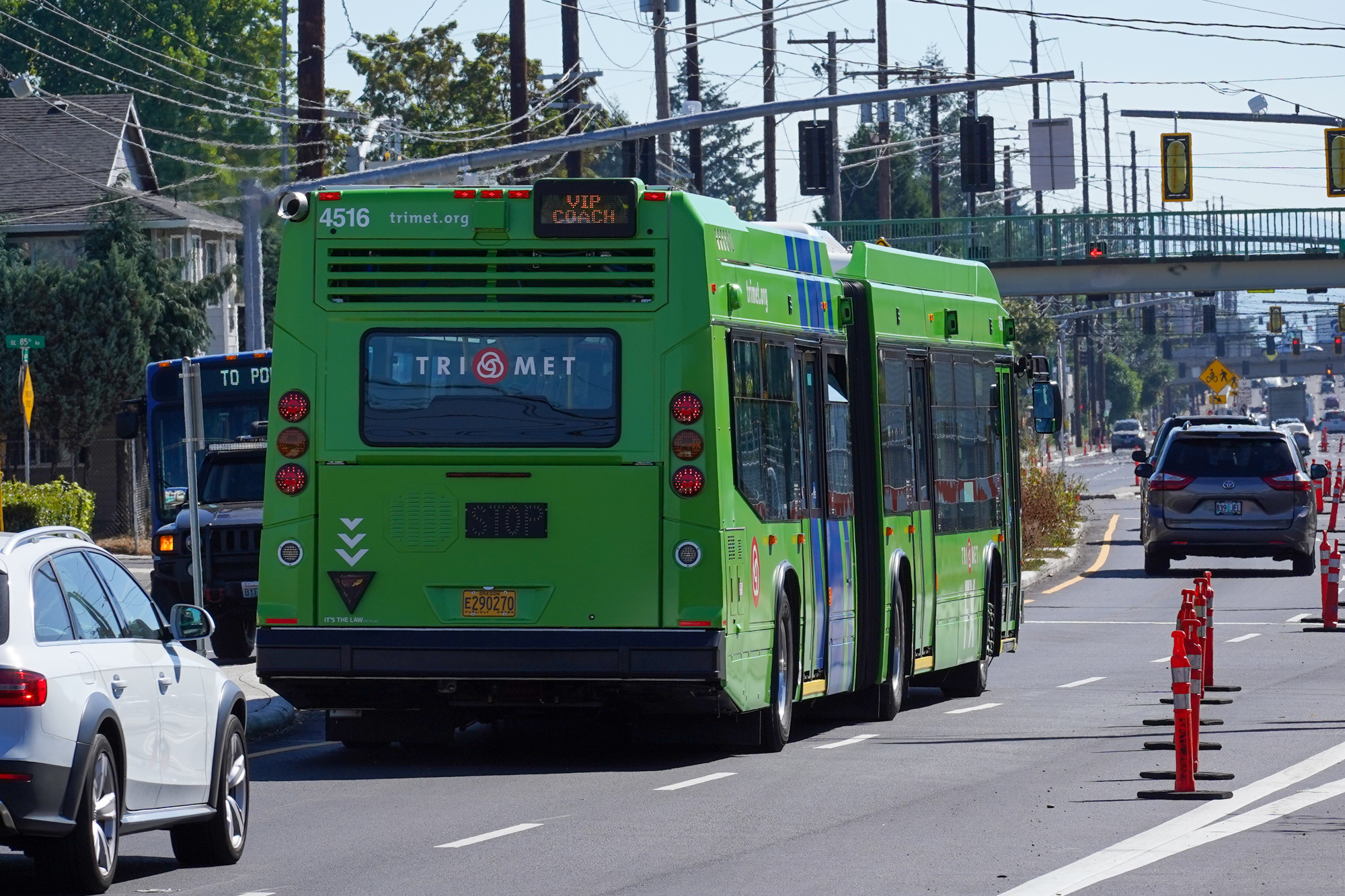
“Prior to this project we were passing up people just because we simply didn’t have the room on the bus.”
– Michael Kiser, TriMet project director
The FX lines boasts 12-minute headways and will shave significant seconds off trip times. TriMet Public Information Officer Tia York said the agency estimates the average rider will experience 20% faster trip times through the corridor (and it would have been even faster if the route didn’t divert south to the Tilikum Crossing instead of using the Hawthorne Bridge, but I digress.)
TriMet used a variety of methods to boost bus speeds.
One “very big lift” according to Kiser was collaborating with traffic engineers at the cities of Gresham and Portland to use machine-learning software to estimate arrival times and adjust signal timing at intersections accordingly. This transit signal priority will give bus operators a leg-up on the busy corridor.
The FX line will also have all-door boarding and fare validator machines at all three doors. The buses also don’t have to pull out of a traffic lane to pick up passengers. This means they can stop and get rolling much faster without having to wait for a break in traffic. There are also fewer stops along the route. Some sections of red bus-only lanes we see on the Portland Bureau of Transportation’s Rose Lane projects are coming too. They aren’t on the ground yet, by Kiser said they should be by opening day (red lanes as a design standard wasn’t in use when TriMet design this project, hence the late implementation).
These time savings are combined with buses that can fit 60% more people. “Prior to this project,” Kiser shared, “we were passing up people just because we simply didn’t have the room on the bus.”
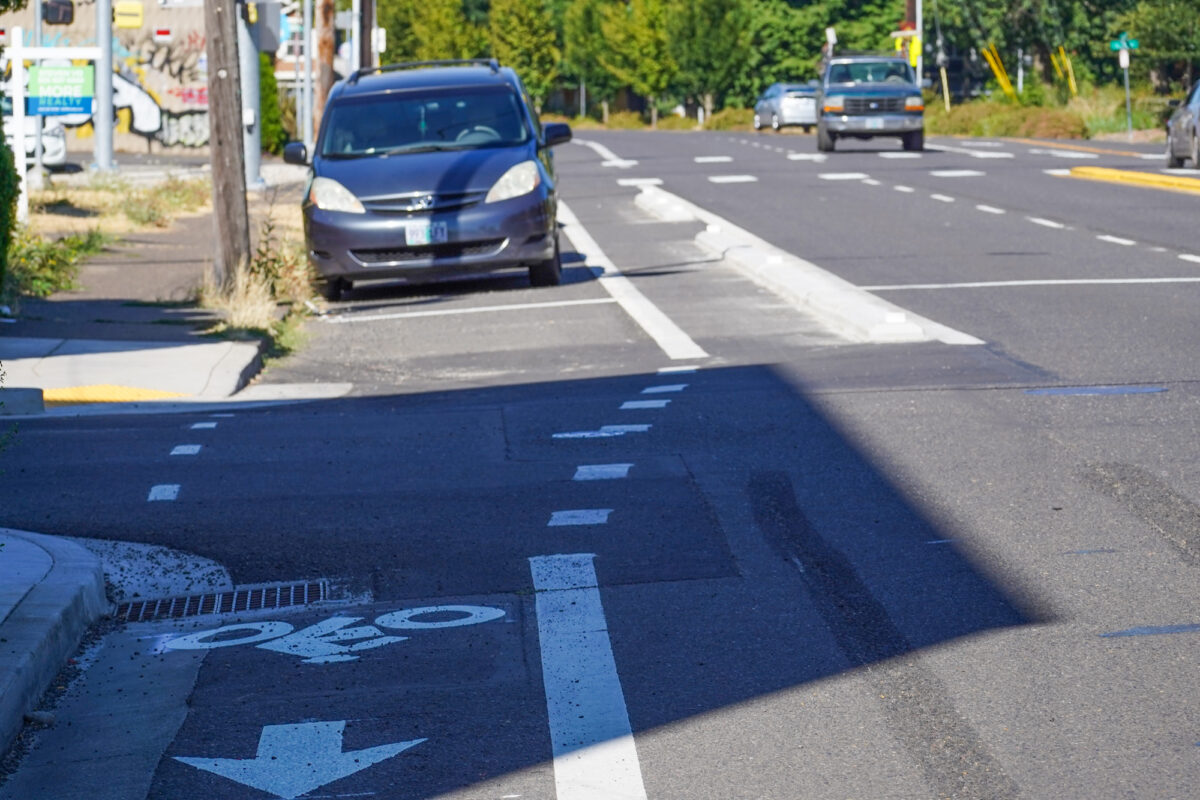
“This is a huge improvement for biking in east Portland,”
– Dylan Rivera, PBOT
Every time someone takes the bus instead of their car we reap major safety benefits. But there are other changes to Division meant to make it safer. Many of them, about $13 million worth, were concurrently installed by the Portland Bureau of Transportation as part of their Outer Division Safety Project.
PBOT spokesperson Dylan Rivera was on the bus with us. He rattled off an impressive list of project elements: three protected intersections, 4.5 miles of protected bike lanes with physical separation, bike only signals with bike detection, 81,000 square feet of new sidewalks in the whole project, almost 60,000 of which are in Portland, and 11 new marked crosswalks with stoplights, median islands and flashing beacons.
“This is a huge improvement for biking in east Portland,” Rivera said.
But a bike lane is only a bike lane if PBOT can keep people from parking cars in it. And on Division, PBOT and TriMet have a lot of work to do on that front. Kiser with TriMet said, “Parking in the bike lane will be an ongoing challenge,” and added they are partnering with PBOT to come up with a solution. But it didn’t sound promising. “Obviously, we have a lot of enforcement issues across the city right now,” he added.
Drivers have lost curbside parking spaces and they’ve lost the ability to turn into any driveway anytime they want. That’s because of new “access management” medians added for safety. This is another name for curbs in the middle of the street installed to prevent people from turning left out of — or into — driveways along the route.
“Transitioning to this changed environment is going to take some time. And access management is a big part of that,” Kiser said. “At times it has made it less convenient for motorists, but it’s safer for pedestrians. The pedestrian fatalities we’ve seen along this corridor is a big piece of how we approached the design.”
The Division streetscape feels very hectic. There’s just a lot going on. The medians help chill things out a bit. They also reduce available space on the road — something TriMet and PBOT had more flexibility on in the design of this corridor because it’s a bus route instead of light rail. If MAX was the chosen solution, there would have been very little room left for anything else after the tracks went in (see East Burnside or North Interstate).
I asked Kiser why this corridor gets a bus while TriMet has favored light rail almost exclusively in the past.
“We’re really asking a lot of this particular corridor, Division is a real workhorse,” Kiser said, rattling off all the different users like freight truckers, errand-runners, walkers, and bike riders. “And we don’t have a parallel route for bicycles out here because the adjacent street network is discontinuous,” he pointed out. “If we would have put in light rail, something would have had to go, there’s not room for every mode. So maybe bicycles would not have been a component.”
Unlike every existing corridor with a light rail, there’s no parallel route for drivers on SE Division either (which makes me think if we would have built the Mt. Hood Freeway, this would probably have been a MAX project.)
I asked Kiser if he thinks Division Transit Project elements will trickle-down to other lines. He said it will and specifically mentioned upcoming “BRT” (bus rapid transit) projects on 82nd Avenue and Tualatin-Valley Highway. “Barbur too perhaps?” I asked, and he nodded in agreement.
The advancements in transit signal priority are especially exciting, Kiser said, because the software they’re using is backwards-compatible to every other bus in their fleet. “All the other buses have what they need to plug into that system from a technological standpoint,” he said. The new bus stations with raised bike lanes through them are another thing TriMet is excited to debut in this project that we could see elsewhere as time goes on.
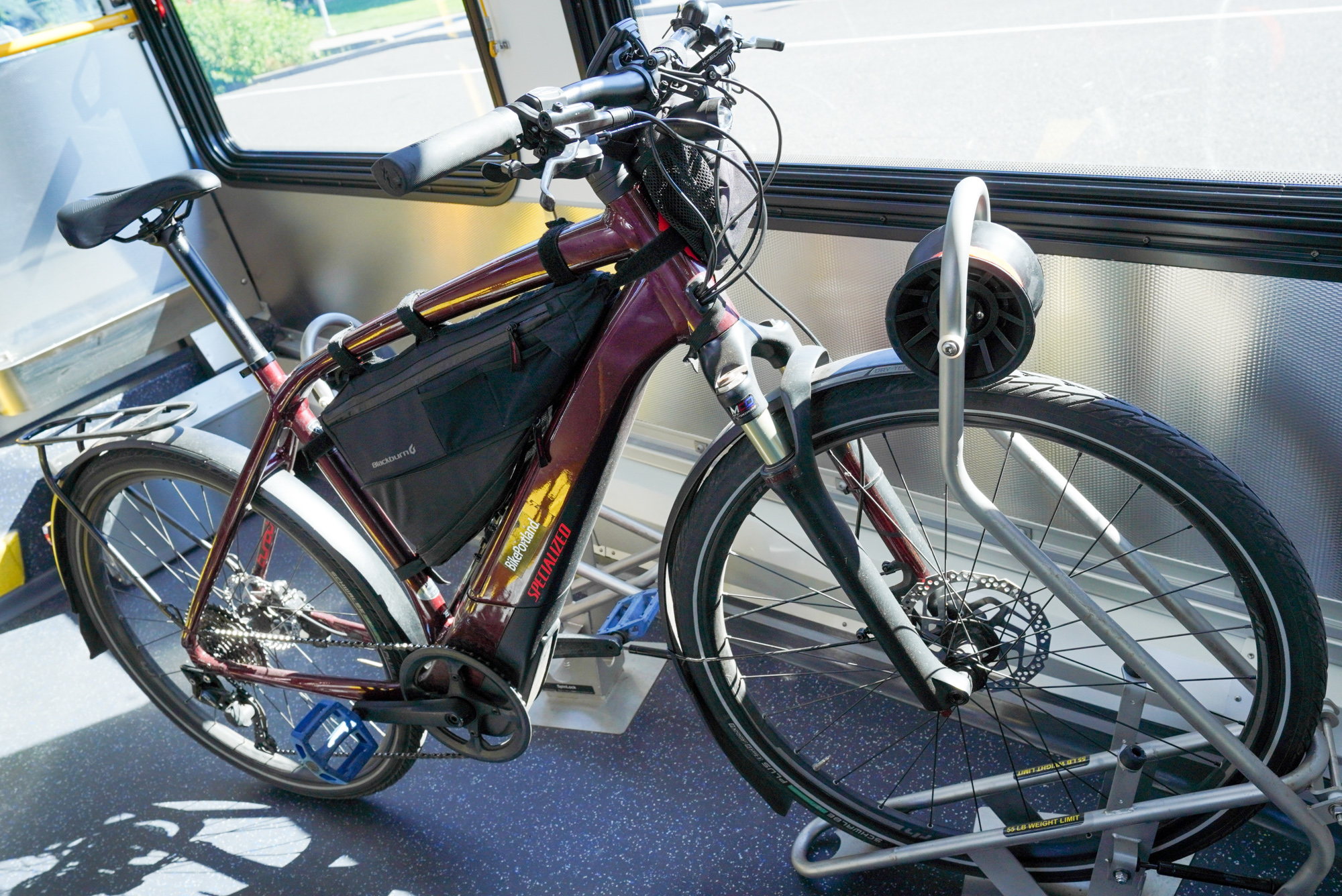


What about the bike racks?
Gone are the front-loading racks. Those waste precious time and weren’t the right fit for an FX line, Kiser said. The new racks are a model known as Spinlock made by Sportworks. They can fit wheel sizes from 26 to 29-inches (yes that includes standard road bikes) and tire widths up to 2.75-inches. Click the spec sheet on the right for a full rundown of the features.
There is space for just two bikes, the same amount TriMet buses have had for about three decades. C-TRAN’s similar buses on the Vine BRT route up in Vancouver, Washington have three racks. So why just two on FX? TriMet considered three racks, but didn’t go that direction. Kiser and another TriMet planner said it came down to competition for space between humans and bikes.
“It’s a balancing act,” Kiser said. “You want to be able to move as many people as you can and make sure they can get to their destination and then balance that with the need of bicycles.” If TriMet sees more demand for bike capacity, Kiser said they could revisit the issue in the future.
(See how easy it is to roll a bike into the racks in our TikTok.)
That’s not the only aspect of the FX TriMet might reconsider down the line.
12-minute headways are nice, but even more frequent service would be better. Is it possible TriMet could speed things up in the future? “I think so,” said Kiser. “With ridership levels being a bit lower now, with our shortage of operators, these things put strains on the service that we can put out. As things kind of get back to a more sustainable state, I think we we could see an improvement in the service.”
The new FX line is a big deal for TriMet. It’s their first major corridor project that isn’t a light rail line, and it feels like there’s a lot of internal buzz about what the means for the future of the agency. Bus projects are easier to implement, quicker to build, more flexible, and cost less than light rail. Does Kiser think FX marks a renaissance in bus service for the region? Not wanting to paint a picture of competition between the two transit modes, Kiser said, “It gives us another tool in the region to reduce our reliance on vehicles. So certainly we are going to see more of it. Because of what doors this project opens up.”

